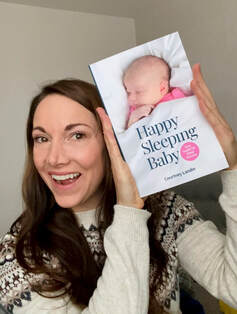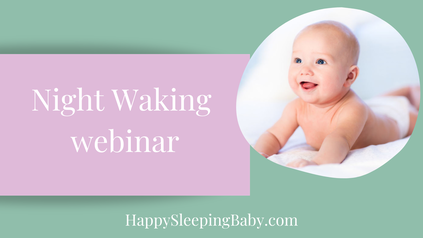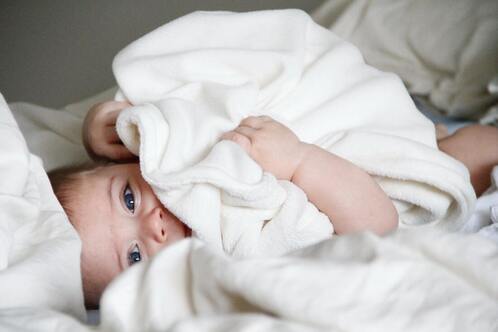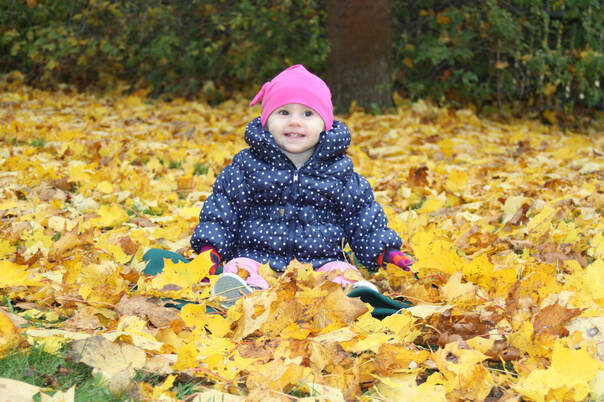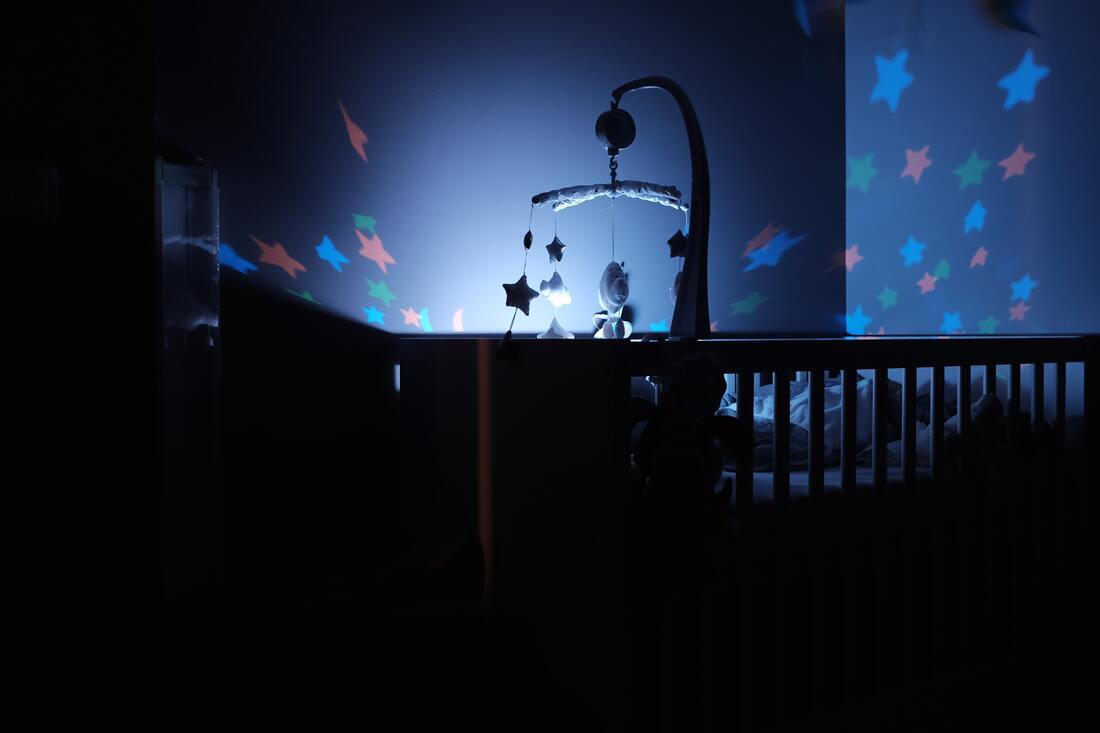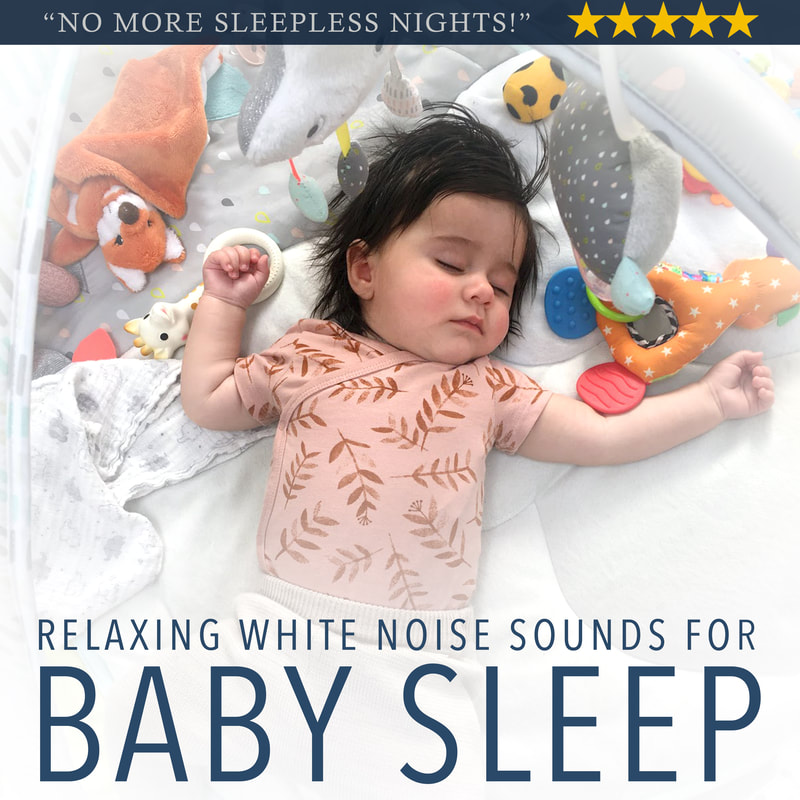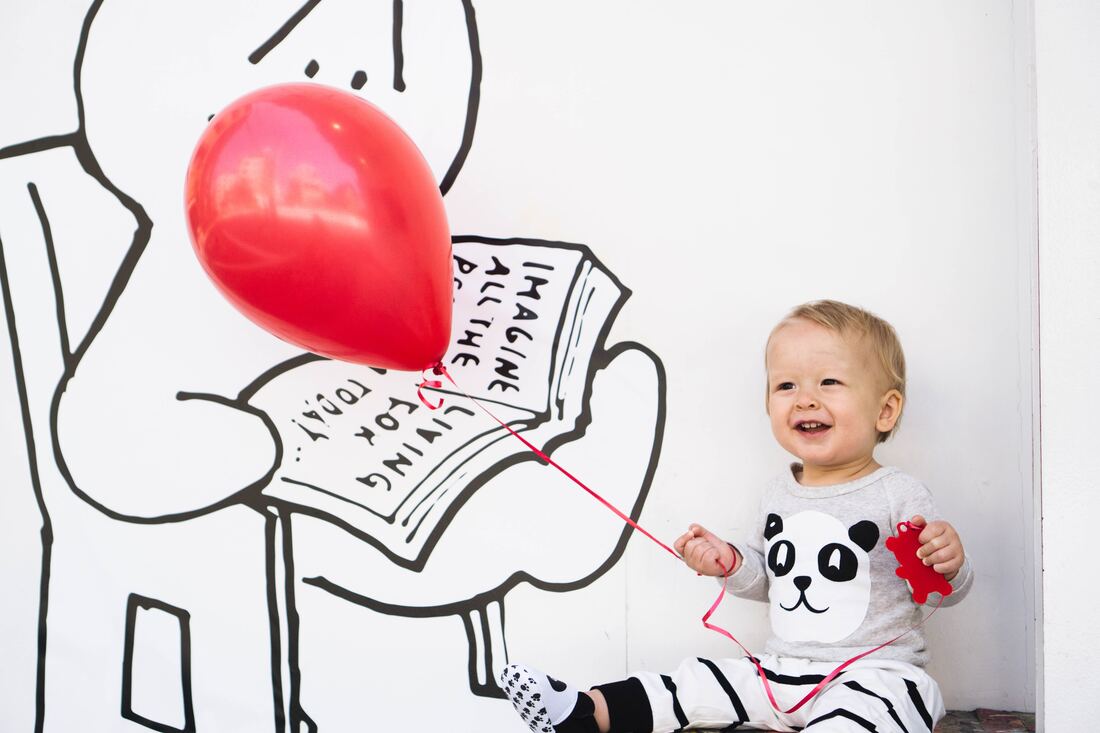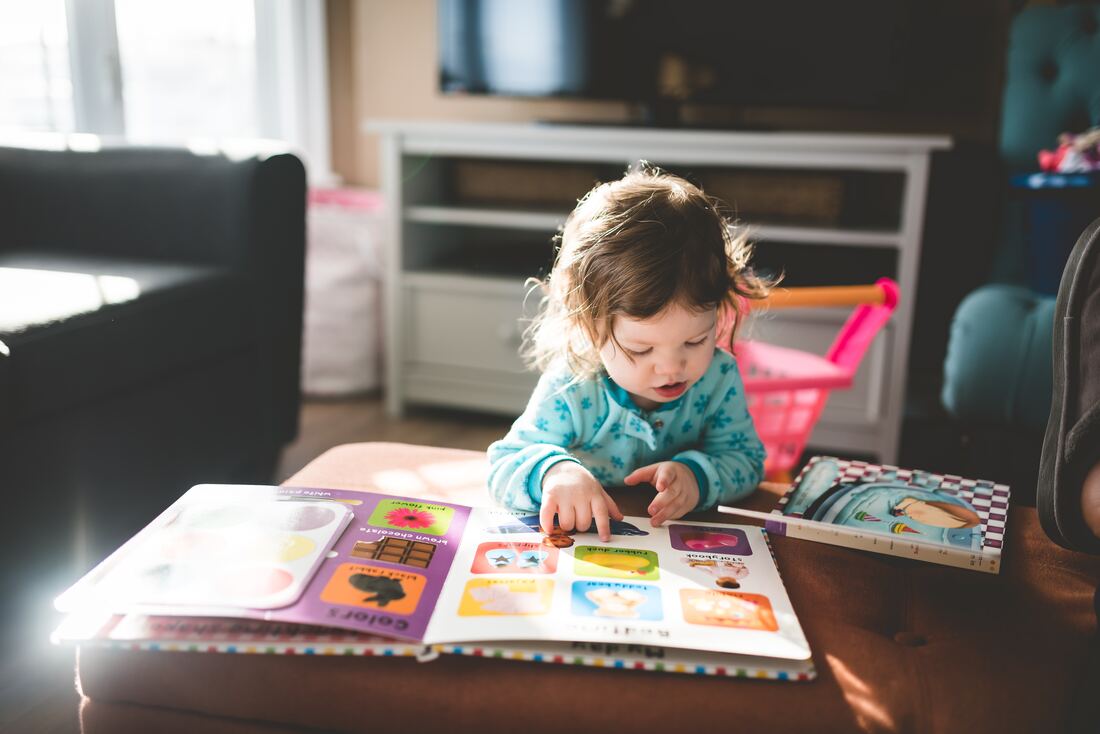Stop struggling with sleep and know what to do to improve your nights and naps starting now. After coaching parents for nine years, I know how to help you when you're struggling and don't know where to turn. But don't take my word for it; here's what a recent client told me:
" I had a call with (known sleep coach) but her tips didn't help all that much. I liked your concrete tips and action plan because it gives me confidence in what to do now. The call was really helpful, thanks!" So, stop questioning, stop trying something different every week, and definitely stop reading in chat groups! Get guidance that will actually help you and it's backed by science and research. You can place your order here to get your free book here This offer is valid until February 29, 2024, but if you miss it then be sure to check out the Parent Resources page for sample schedules and more tips to help your kiddo sleep! Or get in Contact here for more personalized support. I'm here to help you feel like you again! If you need more information about the Happy Sleeping Baby book, which has everything you need to know about sleep then Learn more here.  This may sound a bit strange, but it's my opinion that the holidays 🎄are the very best time of year to work on sleep changes with your child. I know, I know. Things are busy, you’ve got shopping to do, family dinners, and parties to go to... But here are TWO reasons why you should consider this: Reason #1: The Christmas season is the ONE time of year that pretty much everyone is able to take a few days in a row off work. This is a big one, because it frees up both you AND your partner to be able to fully participate in the process. Translation: Your spouse can’t insist that he/she has to wake up early to go to work! Reason #2: You’ve usually got a lot of friends and family around... and they can help you out! If a family member is staying with you for a couple of days, feel free to ask them to take the baby out for a walk while you grab a nap during the day. Tip: I've found that friends and family respond really well to something like this... "I've been doing some research, and we've decided to make some improvements to our son/daughter's sleep. It should only take a couple of days, but do you think you could help me out by taking care of (insert needed task or help here)?" Don't hesitate to ask for a small job or two that would make your life easier. Maybe have them help with dinner or do the laundry, etc. You'd be surprised how family and friends are more than willing to help out. To get started with sleep training, be sure to have the tips that are talked about within the Night Waking webinar. These will help set the stage for sleep and begin your sleep training journey the best way possible. You can watch the webinar here. If you need more information about helping your baby sleep, use the Happy Sleeping Baby book which has everything you need to know about sleep! Learn more here. You can also the Parent Resources page for sample schedules and more tips to help your kiddo sleep! Or get in Contact here for more personalized support. I'm here to help you feel like you again!  There was a great question that was emailed in to me and I thought it was really important to answer. The question was: "Hi, I watched the night waking webinar and it was helpful, but I don't understand how those tips solve night wakings. Can you explain how those those are helpful?? Thank you!" I get that figuring out sleep can be tricky and not exactly straight forward! Why I talk about fixing more during the daytime first is because it's much easier than fixing everything in the middle of the night when you're barely awake. It's much harder to stick to the plan when you are hardly awake yourself! The tips that I go over in the webinar such as setting up a daytime routine, nap and bedtime routine, awake windows, and so forth are important for night wakings for two reasons: #1) The first is that whatever we do during the day will also affect nighttime sleep. Therefore, setting up good daytime routines will eventually help your child's overall sleep quality by reducing any unneeded stress that they might experience. Routines help reduce stress by offering a predictiable day and way for them to fall alseep. #2) The second and most important aspect is that a good bedtime routine reduces your child's need for help to fall asleep. When your child is helped or put to sleep at naps and bedtime and then wakes up at night, they don't know how to fall back to sleep on their own. They need exactly what you've done when they fell asleep to help them fall back to sleep. This is called a learned assocication and no matter what you do on a regular basis is what your child will learn how to fall asleep. Therefore, setting up a nap and bedtime routine that doesn't have as many sleep props (things that help your child fall asleep) will help them fall back to sleep on their own during the night. To help answer what to do next, ask yourself "which part can I work on to help reduce night wakings?" Maybe your child doesn't have consistent naptime and working on those will help nighttime sleep. Or you help your child fall to sleep and they need that all night long. Start with one thing to work on every few days and you will start seeing improvements! Need to re-watch the replay of the Night Waking webinar? Click the picture below and be sure to hit subscribe to get more videos just like this! If you need more information about helping your baby sleep, use the Happy Sleeping Baby book which has everything you need to know about sleep! Learn more here. You can also the Parent Resources page for sample schedules and more tips to help your kiddo sleep! Or get in Contact here for more personalized support. I'm here to help you feel like you again! Watch this webinar where you'll learn all about how to reduce or completely stop night wakings. It will feel soooo good to sleep through the night again, right?! If you need more information about helping your baby sleep, use the Happy Sleeping Baby book which has everything you need to know about sleep! Learn more here. You can also the Parent Resources page for sample schedules and more tips to help your kiddo sleep! Or Contact Us here for more personalized support. I'm here to help you feel like you again! As parents, the last thing we want is to see our children sad, upset or in pain… in fact, we’ll do anything we can to try to ease their suffering and help them feel safe, happy and loved. But, as we know, sometimes babies need to learn new habits, and it can be a bumpy road until they realize this is just the new, improved way of doing things. That is definitely the case with learning to sleep. For babies who have depended on bottles, breastfeeding and rocking to lull them back to dreamland every time they wake up, it can take a while to learn how to do it themselves.
One of the side effects of sleep training is that babies can temporarily protest the crib or their room. It’s no wonder… they associate these things with something they don’t like: having to go to sleep with less help! This is a pretty common complaint, and many parents experience it when their babies or toddlers start making changes with how they fall asleep. Some even tell me their babies start to cry the minute they walk them into the bedroom! The good news is that it’s usually very short term. In fact, I often encourage parents to see it as a great thing. It means their child is very smart, and has figured out that the bedtime routine now means they are getting close to going to bed. This is not necessarily a happy moment for your child, because she doesn’t know how to do this yet and it’s not what she’s used to. It’s only natural that she’s a little anxious. With time and practice, though, your little one will get better and better at her own skills, and will go to bed happily. In the meantime, just be patient and use soft, soothing tones when you put your baby to sleep. Remind him that it’s just bedtime and that everything will be okay. It often takes a very short time for babies to get over this fear and learn to fall asleep with less and less help. When my own child was old enough to walk, she would often just go up to her crib and point to get in it when she wase ready to sleep. That’s when I knew I was on to something and that the Happy Sleep Plan had really worked; she had become a healthy, secure kid who recognized when she was tired and just wanted to go to sleep. This can be the case for your baby too, so just hang in there and soon enough your child will be going to bed without a fuss! If you need more information about helping your baby sleep, use the Happy Sleeping Baby book which has everything you need to know about sleep! Learn more here. You can also the Parent Resources page for sample schedules and more tips to help your kiddo sleep! Or Contact Us here for more personalized support. We're here to help! Traveling with kids can often be a stressful event for parents but, here are ten tips to make the whole trip fun for the family. 1) Plan, plan, plan. If you didn't plan trips before having kids, it's time for that to change. Having a plan reduces the headache of trying to figure out things on the go. Know where to eat or what to bring for snacks, plan nap times or down time, and bring things for entertainment. 2) Have a plan for when things don't go as planned! Stock snacks, games, books, or a mobile device so there are activities if your well thought out plan becomes derailed. 3) Don't over-schedule your family. Kids (and parents!) need down time. That's the whole point of a vacation, right?? Make sure there is a slower rest day among activity filled days. A half day of board games or baking makes for great rest-day activities that include an afternoon nap too. Having a rest day will reduce crankiness for everyone! 4) If you are traveling abroad, pack your known brand of child medications to reduce the stress of finding a suitable medication in a different country. 5) Limit sweets. Along with different schedules and places to sleep, eating too many sweets will make kids cranky and hyper. It's vacation time but be sure to set limits too! If there has been a day with a lot of sugar, make the next day a sugar-free day. 6) Have family quiet time before heading out for the day. If the day starts out hectic, then it will probably continue to be hectic! Or at least schedule some downtime during the day. 7) Bring along a familiar stuffed animal for your kiddo to sleep with or their own sheets and blanket, if possible. Having familiar smells and feelings help calm their brains for sleeping. 8) Keep your child’s bedtime routine the same as it is at home. A consistent pattern will help them know when it’s time to sleep and provide a feeling of security. 9) If your child is sensitive to lights and sounds while sleeping, be sure to make a space for them that's dark. Setting up a blanket tent can help block out lights and other stimulating sights. Use a fan to block out noise so that unfamiliar sounds don't keep them up! 10) If you’re traveling across different time zones, adjust to that time zone right away with nap and bedtimes. Don’t be surprised if it takes about seven days to adjust, that’s normal. Be sure to get sunlight in the morning to help wake up the body and adjust your body clock. Having a successful vacation includes coming home feeling rested! Make sleep a priority when traveling to help reduce crankiness and hyper-activity for your kids. Safe travels! Along with being a sleep coach, Courtney Landin is a Family Health Coach who focuses on exercise, nutrition, and sleep to help families create balance in busy lives. You can also find her at www.LivingHealthyHappy.com for mama and family training, and nutrition ideas and consultations. If you need more information about helping your baby sleep, use the Happy Sleeping Baby book which has everything you need to know about sleep! Learn more here. You can also the Parent Resources page for sample schedules and more tips to help your kiddo sleep! Or Contact Us here for more personalized support. We're here to help! Watch the latest tips to see if you're baby is ready to drop a nap time! If you need more information about helping your baby sleep, use the Happy Sleeping Baby book which has everything you need to know about sleep! Learn more here. You can also the Parent Resources page for sample schedules and more tips to help your kiddo sleep! Or Contact Us here for more personalized support. We're here to help! There comes a time in most parent’s lives when they begin to question: when is the best time to ditch the crib and transition my toddler into a big-kid bed? The answer is both simple and not so simple, and here is the short answer: wait as long as possible …and preferably not before age 3! Are you shocked by that answer? Most people are! Curious to what I mean? Keep reading. If your child is anything like my daughter (soon to be 3 years old) our crib has been pretty well-used and slept-in. My daughter can rely on her crib. She knows it’s there. She knows it means “sleepy time,” but most importantly, she feels secure and cozy inside. The crib is her domain and its physical boundaries (the rails) provide her security both physically and emotionally. Security is a big one and I wanted to dive a little bit deeper into its root meaning. Babies, but especially toddlers, secretly crave and thrive off of boundaries to make them feel safe. We like to call these "loving boundaries" here at Happy Sleeping Baby. When you set a loving boundary with your child, you reduce their anxiety, in a big, grown-up world filled with so many options. Secure boundaries create predictability. Predictably reduces uncertainty. And uncertainly reduces anxiety. So, in effect, lessened anxiety, makes your child feel more secure. The rails on a crib set a loving boundary. Sure, my daughter can move how she pleases inside of her crib, but it certainly does not provide her with many options of where to go in the middle of the night. No wandering around the house, no coming into our room to poke our faces, or no playing unsupervised. That firm boundary is there to keep her both physically AND emotionally secure. (We will talk about when it becomes unsafe further in the blog). That is why I advise parents to wait as long as possible before moving them to a big-kid bed. Before children are 30 months of age, their brains are not mature enough to understand that they need to stay in their bed until the morning. Have you tried reasoning with a 3-year-old lately? Now try reasoning with that same 3-year-old, at 2am, explaining to them that they need to get back into their bed! My point exactly. Furthermore, if your child is sleeping fine in their crib, and not trying to climb out yet, why take away their ‘safe space’? Please don’t feel rushed into the transition. I have seen too many families making the switch too early, then all of a sudden, their once perfect sleeper is waking up multiple times a night. As the old saying goes: don’t fix something that isn’t broken! Here are some Q&A (Questions and Answers) for frequently asked questions on the topic. **All answers are based off of the experience of a sleep consultant. Always consult with your doctor** What if my child is getting physically “too long” for it the crib? This is a great question! Did you know, in Sweden, standard crib sizes are actually much smaller than in the United States? Therefore, your child will likely “out-grow” the crib more quickly than a baby in the US. I would recommend buying a junior bed that has rails (similar to a crib) but it can be converted into a big-kid bed when they are ready. The mattress size is 140cm. Here's a great option or idea that we recommend for parents: Crib to bed option We are getting ready to welcome a new baby into our family. The new baby will need to use the crib. Therefore, it makes sense to transition my toddler to a big-kid bed, now, right? Congratulations! This is another great question! And the answer is “not necessarily”. Adding a new sibling to your family is a lot of change for everyone, especially your current child(ren). Now would not be an ideal time to introduce something new and unfamiliar. Your current child will crave the security in their old patterns and routines. This includes their sleep environment. Consider buying another crib, used or second-hand, or upgrading your older child to a junior bed with rails (link above). What if my child is starting to climb out of the crib? That is a huge safety issue and that does not sound secure. This is a tricky question and the most common question we get! Obviously, safety is the #1 priority. You, as parent, must always decide what is best for child. If you have already lowered your crib to the lowest setting, there is still hope. Some cribs can be converted to a floor crib (meaning, you put the mattress on the floor). Other cribs will need some augmenting to be safe and functional. Be aware of the gap between the top of the mattress and the bottom of the crib railing. Again, this may require some creativity and/or crib re-assembly/re-configuration. I have seen families get really creative and bring out their tool boxes! It may look funny, but it works. It is a really good solution if you are determined to keep your child’s ‘sleep progress’ intact. If big-kid sleeping is absolutely necessary, here are some tips:
We hope this helps you understand when to move your child to a big kid bed! If you want more information about helping your baby sleep, use the Happy Sleeping Baby book which has everything you need to know about sleep! Learn more here. You can also the Parent Resources page for sample schedules and more tips to help your kiddo sleep! Or Contact Us here for more personalized support. We're here to help! I will never forget the reaction of my husband’s parents when they heard our white noise machine for the first time. They looked concerned, yet were respectful, as they asked why we had “jet plane noise” playing while our daughter slept. I still laugh when I think about this moment. They probably thought my parenting techniques were a little strange and maybe a little too American (my husband and his parents are Swedish). To their defense, I understand why they were skeptical. Most people believe that you must produce a quiet environment for good sleep. Therefore adding-in noise can feel counterintuitive and might go against everything you were once taught. So, before you form your own opinion, let’s dive into what noise really is. White noise is essentially an ambient sound, such as a whirring fan or air conditioner. Noises can be described in different colors depending on their frequency. White noise is mainly known for camouflaging other sounds that might occur naturally in an environment. Now speaking of jet plane noise, have you ever been on an airplane and before taking off you started to feel really sleepy? Have you ever caught yourself nodding-off? This happens to me all the time. This is a perfect example of the effect of white noise on our brains. The humming sound calms the mind, which in effect, induces sleep. Studies have shown that white noise can help both babies and adults fall asleep faster. Now I can see why. What about the other benefits of white noise? Does your baby have a loud, older sibling? Do you live in the city where you hear sirens? Do you unload the dishwasher during baby’s naptime and cringe at the clinking of the plates against each other? Maybe you forgot to turn your phone on silent and the ringer is super loud. Or, what if you like to entertain past your baby’s bedtime? Now, let’s say your baby is sleeping in the next room over. White noise is great for blocking-out these sounds so your little one can sleep longer and better. So how do I get white noise, you ask? There are many Spotify playlists out there and here's one created by a former client that we recommend for parents. Also, there are a wide variety of white noise machines you can purchase, particularly online. Also, some parents say using an ordinary fan works well too. As for our family, we chose to go “all in” and purchase a white noise machine. We didn't want to rely on turning on Spotify every time. However, this is truly up to personal preference. As I always say, consistency truly is the secret ingredient here. White noise is a big part of our bedtime routine. (Learn more about a great bedtime routine here!) Every time I turn the white noise machine on, my daughter says “Mama night night” because she knows that the sound means it is time for bed! This consistency becomes especially handy during the toddler years. Now that our daughter is 2, I have never had to fight her to go to sleep– not once! If you stay consistent with using white noise, your baby will start associating the noise with sleep, too. There are many white noise options out there to choose from and it really comes down to your family’s choice in regards to budget, size, and what your options are due to where you live. Here are two white noise machines that are easy to find for parents either in Europe or North America. Both are portable and provide good sound: Yogasleep Hushh portable white noise MyBaby SoundSpa (if the links don't work, just search for the names of the devices) I hope you test out using white noise as a help for your baby's sleep! ~Devon Want more information about helping your baby sleep? Use the Happy Sleeping Baby book which has everything you need to know about sleep! Learn more here. Visit the Parent Resources page for sample schedules and more tips to help your kiddo sleep! In the age of the internet, there is a massive amount of information about baby safety. It can feel quite overwhelming, especially as a first-time parent. It’s hard to know what to relax about…and what to actually take seriously. Safe sleep, I would argue, is one topic to take seriously. Culturally speaking, many people have differing opinions on what sleep should look like. Yet the data still suggests that about 1 in 1,000 babies die from Sudden Infant Death Syndrome (SIDS) every year. And for me, that’s enough to want to know how to prevent it. So what is the safest position for your baby to sleep? According to the American Academy of Pediatrics (AAP): the safest way is on their back! Since the AAP made the “back to sleep” recommendation in 1992, the SIDS rate has decreased more than 50%. While it may be difficult to keep your baby on their back, a breathable crib mattress cover can help ease some worry. Once your baby can roll over, they are generally okay to sleep on their stomach. But still keep in mind safe sleep recommendations at all times. What also causes SIDS? Soft surfaces, loose bedding, overhearing with too many blankets, stomach sleeping on soft bedding…and of course smoking by the mother, and poor prenatal care/prematurity. Some of these factors are obvious to many, but some may not be so obvious. Especially the risk associated with loose bedding. For example, here in Sweden, many still use blankets with their babies and don’t know about “Sleep Sacks”. Sleep Sacks are widely used in the United States. A sleep sack is essentially a wearable blanket. It replaces loose blankets in the crib that can cover your baby's face and interfere with breathing. In addition to helping your baby sleep safer, it helps them sleep better, too. It's a warm blanket they cannot kick off. This ensures the baby sleeps soundly throughout the night. I am not sure why Sleep Sacks aren’t as popular in Europe. For our family, we used Sleep Sacks and didn’t allow a blanket or pillow in our daughter’s crib until she was 2 years old. Although slim, the risk of SIDS or suffocation was not worth it, in our eyes. Here are some other precautions we took:
Everything I mentioned above are all recommendations per the American Academy of Pediatrics, National Institute of Child Health and Human Development plus a task force of the U.S. Consumer Product Safety commission. Furthermore, the AAP and the US Department of Health and Human services recommend that parents room-share, but not bed share. Here is what the report advises:
While the true cause for SIDS is unknown, these recommendations can reduce your baby’s risk, prevent suffocation and give them the safest sleeping environment possible. Happy and safe sleeping! Learn more about helping your baby sleep their best with the Happy Sleeping Baby book! Learn more here. Or read more about setting up your baby's room for sleep here: Room Environment Need sleep guidance to help you figure out sleepless nights? Contact us for a free 15-minute call here. When the leaves start falling off of the trees, you know it's soon time to also fall back an hour with the clocks for daylight savings time.
Our body’s circadian rhythm has a strong influence on our sleep and wake times. As adults we most likely are trying to pay off some sort of sleep debt so, when the clock falls back, we are happy to gain more time in bed (as long as we actually go to sleep at our normal time the night before)! But if you have young kids this change can take time for their bodies to adjust to the new times. To help minimize chaos that the time change can cause in a house with young kids, you can to start adjusting their internal clocks a couple of days before the actual time change. To do this, start nap and bedtime 15 - 30 minutes later until the time change and 15 - 30 minutes earlier two days afterwards. There will be some adjustment time for up to a week but by splitting the time makes the change easier by avoiding too much overtiredness with a full hour change. *For younger babies, 6 to 12 months, adjust the time by 15 minutes every two days until the schedule is back to normal. Older babies can handle the 30 minute change.* If you don't make any changes before the time change, no worries! Just follow the advice below! Naps Before the time change, nap time is normally at 9:00 am After the time change, you’ll fall back 30 minutes and nap will be at 8:30 am (since it is actually 9:30 am in the body) Bedtime Before the time change, bedtime is normally at 7:00 pm. After the time change, you’ll fall back 30 minutes and bedtime will be at 6:30 (since it is actually 7:30 pm in the body) Stick to these times for three days and then go back to your normal times according to what the clock says. Need more guidance about helping your baby sleep? Use the Happy Sleeping Baby book which has everything you need to know about sleep! Learn more here. Or visit the Parent Resources page for sample schedules and more tips to help your kiddo sleep!  Before I became a mother, routines were foreign to me. Inf act, if you asked anyone who knew me before having my daughter, they would laugh if you asked if I was a routine-oriented person. After having a child, however, I found myself (even more so) living moment-to-moment just to get by. I just didn’t understand how routines could make life so much easier rather than overcomplicate what already felt so exhausting. Soon, it became my mission to ensure our family got proper rest. I was willing to try anything -- even if that meant changing the way I was wired. So, I hit the books and tuned-in to what the experts were saying. One big theme I noticed was establishing good routines for both day and night. Simple, yet consistent routines are a good idea to start early on because it helps your baby’s body develop natural sleep/awake rhythms so the right hormones are released at the right times. It also puts less stress on our brains because your child will know what to expect and what happens next. Routines also allow our bodies to better digest food because we are used to eating at certain times of the day. All of this helps your child become naturally ready for sleep. How wonderful! Establishing day time routines was game-changing for our family, but bedtime routines became equally as important. Think of a bedtime routine as laying down the foundation of a house. If you don’t have a solid foundation, the home will not be steady. The same goes for sleep. If you don’t have a proper routine and the right room environment [read more here about The Best Room Environment For Sleep] sleep may not be steady as well. Bedtime routines don’t need to take long. Actually, they shouldn’t last more than 30-40 minutes; keep them short and sweet. If any longer, your child may not see the pattern of what the routine means. Patterns help your child’s brain transition into nighttime, but mostly, they help your child make the connection that it’s time to sleep soon. Here’s a sample routine:
Once your little one starts to grow teeth, you can add-in teeth brushing too. For our family, even if our daughter was clean, we still gave her a warm bath every night. We used soap every other day, or even every few days, so her skin wouldn’t dry out. The consistency of the nightly bath helped wind her down, and soon, she began associating bath time with bedtime. When I finally did lay her down, in her crib, she eventually became a superstar at falling asleep independently. I owe that a lot to our nightly routine. The trick here is true consistency. Try out a night time routine and give it time, like two weeks. It takes time to learn something new and put together that the bedtime process means sleep. Stay consistent and your baby will soon know what their bedtime means! Want more information about helping your baby sleep? Use the Happy Sleeping Baby book which has everything you need to know about sleep! Learn more here. Visit the Parent Resources page for sample schedules and more tips to help your kiddo sleep!  If you are like me, Awake Windows quickly became my favorite concept when I started learning about baby sleep. The information felt like a secret formula to help our days become more peaceful, and, as a result, our nights more restful. An Awake Window is a period of time that your baby can stay awake...happily. Yes, there is an actual scientifically-proven time frame that your baby should stay awake before they expire and require sleep again. Awake windows work with the science of sleep pressure. Sleep pressure builds in humans while we are awake, gets eliminated while we sleep, and the cycle continues throughout the day. Think of a teapot building steam before it shouts. Has your baby ever seemed wide awake and ready to party? Some parents might think hyper behavior means their baby is not sleepy, while this is often quite the opposite. In fact, when a baby becomes overtired, their little bodies are flooded with the stress hormones called cortisol and adrenaline. This is what keeps them wide awake and full of energy. During our sleep training journey, we learned this the hard way. One evening we went out to a family dinner which resulted in our daughter staying-up way past her bedtime. When we got home, it took us 2 hours of our daughter uncontrollably crying until she was able to calm down and fall asleep. The point is: it is harder to get your baby to fall asleep in an overtired state. Here is my advice: try to find your baby’s most ideal Awake Window. Avoid your baby becoming overtired by sticking to that Awake Window as best you can. Remember, sometimes overtired behavior is unavoidable. There can be other factors at play like when a baby is in the middle of a big development. This happens quite often as babies are constantly growing and changing. Other times it could be that your baby has had too much stimulation. Big changes can also be the culprit, like starting preschool [read more about sleep changes when starting preschool here] is a perfect example of when this may be out of your control. The chart below helped me understand Awake Windows, by age. This is a general chart so your baby might have a slightly different Awake Window times. Newborns ~ 45 mins to 1 hour awake between naps 3-6 Months ~ 1.5 to 2 hours awake between naps 6-13 Months ~ 2.5 to 3.5 hours awake between naps 12 months to 3 Years ~ 4 to 6 hours awake between naps Again, every baby is different, so what works for one mama may not work for you. For our daughter we were more conservative with her Awake Windows. Meaning, we encouraged her to stay awake for shorter periods of time rather than longer periods of time. Test out an Awake Window and see how your baby responds. It may take several attempts to find your baby’s “sweet spot”. Be patient and kind with yourself. Babies are constantly growing and developing. Just when you find the “sweet spot” it could change on you! Stay the course and do your best. You got this. Want more information about helping your baby sleep? Use the Happy Sleeping Baby book which has everything you need to know about sleep! Learn more here. Visit the Parent Resources page for sample schedules and more tips to help your kiddo sleep! Or learn more about Awake windows here.
Your baby's room plays an important role in sleep. Now, I don't actually think the picture is a good representation of a good sleeping environment, but it looks nicer than a completely black picture!
Your child's room environment for sleep is a positive sleep prop to help promote sleep. When your baby wakes up at night, these factors help calm the mind and body to help go back to sleep. These tips not only help babies sleep, but also us as adults too! To encourage the best sleep for any age, an ideal room should:
If some of this sounds strange, remember that your baby came from inside the womb where it was dark, the perfect temperature, and had a constant whooshing sound. Re-make your baby's room to be as womb-like as possible and you'll have more success with sleep. This theory even applies to adults! If you have trouble sleeping, try out this room environment too. Visit the Parent Resources page for more tips to help your kiddo sleep! Or get in touch if you have more questions. This post is taken from my book, Happy Sleeping Baby ~ Your Guide for Sleep Success, ! Want to order the book? Use the form below: This post was written by a former client who reached out about creating this white noise album. I use the playlist often when I'm trying to work or relax! Give it a try via the link below in the post. ~Courtney Guest post written by: Kaveh Akaber I’m a filmmaker and composer and have professionally experimented with sound all my adult life and nighttime has always been a creative playground for me. But after our first child, I was struggling to fix my random sleep, take care of my child and try to be creative all at the same time. After years of insomnia, I collapsed. My body said stop. Not even music could calm my senses and make me go to sleep. Doctors advised me to take heavy sleeping pills, but after several weeks I stopped. Before I went to bed, I had a feeling of panic and couldn’t calm myself. This reminded me also of my newborn baby that didn’t have the right tools to calm down before sleep. I have tried various methods to deal with this issue for many years. At one point I was reading an article about different sound therapies. How sound and music could redeem Alzheimer’s patients to start remember again and other sounds that can make you sleep easier. It was during this time I started to look for different methods of white noise sound therapy to deal with my burnt-out state of mind. Sounds are actually ancient life hacks to make you go to sleep. People have used their vacuum cleaner to make noise and get their babies to go to sleep, driving cars for hours, or listening to static on old radios through the whole night. In all of these sounds, you have white noise. Actually, everywhere you go there is noise. Different noise can also be described in various colors depending on which frequency they have. Light waterfalls can be described as pink noise, and heavy waves on sea can be described as brown noise and so on. In my opinion the problem is our surrounding is based on artificial environments with too many sounds that interfere with our senses. We start looking for total silence instead of relaxing or going into deep meditation. But if you think about it, total silence is an even more unnatural state of mind. In our evolution, our minds have developed in light sounds in surroundings. For example, sleeping under the stars, listening to the wind, or sleeping near the sea. White noise can be discovered in all of these natural environments. According to professor Göran Söderlund at Lund´s University, if your body is too tired before sleep you can have a sense of panic stress instead and to fall asleep can take a longer time. Especially babies who don’t have the tool to deal with this issue. White Noise can instead increase the state of alertness and make you more awake and then make you tired quicker and put you to sleep. So, what noise works for you? There are loads of poor recordings and sounds out there, so therefore I started to make my own noises. I created this Relaxing White Noise Sounds for Baby Sleep album inspired by these events and my friend encouraged me to produce one album especially for his baby. I calibrated the white noise with sound recording pulses from other space, the seaside from south Sweden, winds from the mountains in north Scandinavia, and a hairdryer at home. In my studio I almost fell asleep during experimenting with these sounds! So, I thought this might work! This will definitely not solve all your issues with sleeping and a troubled mind, but maybe a good way to make it easier. A strange mind is a strange mind. The only thing you can do is deal with it. /Kaveh Akaber Link to the album Relaxing White Noise Sounds for Baby Sleep: https://open.spotify.com/album/4zdA0jutWM8NmHmOhLFcSE?si=7m3tRtUlT5GSVzNcGIZOvg White noise can be a great part to a perfect bedroom environment. Read more about a great room environment for sleep here. Welcome to life with a toddler! If you haven't read Part 1 of this series, you can do that here: Starting Preschool (Part1)
As your child adjusts to this new life as a preschooler, don’t over schedule yourself during the first month! If you are stressed with your schedule your child will also feel this along with needed extra time during this adjustment. The first two weeks will be a time of adjusting and learning new routines. Be sure to give yourself and your child time and patience to adapt. Be ready for some early pick-ups, if needed. Then be ready for your child to get sick soon after they begin…you just get back to work and then you are home with a sick kid. Welcome to preschool life! For some tips to help reduce sickness you can read more about how sickness spreads here. Many kids will sleep worse after starting preschool; if this happens you aren’t alone! Often parents tell me that the first two weeks were pretty easy but after that their child didn’t sleep well and became extremely cranky. Making adjustments for a short time is like going on vacation – you can deal with the new schedule, but then you’re ready to get back to normal after about two weeks; except this is the new normal. It’s not uncommon for sleep to get worse because your child is experiencing new environments, new people, different food, a new napping place, and learning how to be away from you. It’s a lot to handle for a little kiddo! You might notice that your child will be sleepier but have a harder time sleeping, they might wake up more often, have more dreams or be upset by dreams, be sad, have anxiety, eat less, or seem unhappy. Be sure to give lots of extra hugs and allow for some extra time for bedtime. This is all really normal! Think about when you last made a new change; you probably also felt a little cranky after a week, or slept worse, ate more or less. Going through change is not any different for you and your child. If you are seeing that your child is tired before their normal bedtime, make bedtime 20 to 30 minutes earlier. You may need to make time for a few more snuggles or an extra book. It’s not uncommon for kiddos to regress with sleep during times of change. Now, what about you? Adapting to life with a preschooler will bring many emotions. Happy, sad, confused, a sense of freedom, or need to cry? Acknowledge your feelings as it’s o.k. to feel anything right now! Think about how much your life has changed in less than two years. Everyone is going to have emotions from these huge changes and there’s no right or wrong feeling. I remember feeling happy to get back to work (I really love to work) but of course sad that my baby was growing up. Don’t be surprised if one parent has an easier or harder time dropping off your child either. This goes both directions; you child may be sadder with one parent, or you might have a harder time dropping your child off or your child may be more upset with one parent than the other. Just know that it’s o.k. to feel sad, happy, relived, or worried. There’s no right or wrong way to feel. Hopefully these tips help you and your child adapt to preschool life. The best part about these tips is that you can apply them to any new changes or at any age. Developing a foundation to handle change builds trust and a strong bond with you and your child. Visit the Parent Resources page for more tips to help your kiddo sleep! Or get in touch if you have more questions. Find more sleep and development info at Happy Sleeping Baby on Instagram or Facebook! Starting preschool or daycare (if you are in Sweden it’s förskola) is a big leap for both you and your child. It will come with big emotions for both of you, but helping them to prepare for the transition with ease the changes ahead. It’s never too early to help your child make an adjustment! Providing them with an easier transition helps strengthen the bond and trust between you both.
When working with clients I will often relate starting preschool with making changes with sleep because the concept is the same – make changes according to your child by giving them guidance and support through the difficult period. Change can be hard no matter what age and giving guidance and support helps build trust and reduce their stress. But keep in mind that even when making changes built around trust and guidance there will still be an adaption period that may come out as crankiness, sleeping worse, or sadness. Change can be challenging, but we never want it to be overwhelming for a child. Using the following tips and help ease the transition of starting preschool. Make the transition easier Three to four weeks before: 1) Talk, talk, talk to you child about the change coming up and what they will be doing at pre-school. Make it exciting and fun to hear about! 2) Visit the location. I would suggest walking by several times and talking to your child about them going there soon. Try and visit while the kids are outside playing to get them used to what they will do there. If you feel comfortable, stop in and say hi or ask if you can stop by with your child to say hi for a few minutes. 3) Visit other play places to get your child to being around other children. If possible, let your child explore on their own while you are sitting a little further away and encourage them to explore. This is also great to start at home as well as this builds their skill in a comfortable environment. 4) Choose a comfort item (blanket or stuffed animal) for them to have with them at preschool and keep at preschool. 5) Be confident, happy, and excited when talking about preschool. Your child will mirror your emotions about the changes. One to two weeks before: 1) Begin on the same schedule as your child will have at preschool in regards to eating and sleeping times. 2) Develop a goodbye routine. Wave from the same location to give them consistency. Provide your child with ideas on what they can do if they are sad when you are leaving. For example, let them know they can ask for a hug from a teacher or have a comfort item with them to hold on to. 3) Continue talking, making a stop or two by the preschool, continue giving your child space to play either on their own or with other children, and continue talking about pre-school in a positive way, even if you are feeling unsure or nervous yourself! Our preschool sent a photo of the class and welcomed Taylor with a note. We put the picture up on our fridge and started talking about going to preschool often. It really helped the transition for her to begin on the first day. Starting daycare is a gradual process and I often explain to parents that it’s similar to sleep changes using a Happy Sleep Plan or sleep support. Both are parent assisted processes that allow your child to adapt to the changes. You can’t make the change for them but you are there to help when needed, give guidance, and offer support. To continuing helping your child adapt and develop a positive attitude after they have begun preschool, ask them about their favorite part of their day when you pick them up. Click to read Part 2, where I’ll talk more about what to expect as your child adapts. Find more sleep and development tips at at Happy Sleeping Baby on Instagram or Facebook “Happily ever after … becoming parents” – what happens to your marriage after the baby arrives9/1/2020
Guest post by Polya Rosin, Sweden’s #1 Relationship Strategist
To have a child is a miracle, right? I doubt there is a mom out there who could name a bigger source of joy and love than her kids. Most couples dream of the day when they become parents, take birthing classes, read parenting books. And little do they prepare for what is to happen to their relationship, once the baby arrives. Did anyone tell you what to expect in your relationship with your spouse once you become parents? Did anyone give you tools and strategies for how to survive and thrive together, not just as parents, but as lovers, as friends, as a happy couple? How much research, time or money did you invest in your relationship, preparing to become parents? My guess is little to none. And yet the biggest impact on your baby’s wellbeing comes from you and your spouse, and the quality of your marriage. So, let’s look at what happens after the baby (or more babies) comes into your family: 1. Your spouse and your relationship just went from #1 to #10 in the priority list and that is hard to accept – nobody likes to see they no longer matter much 2. Your sleep is messed up – you must have heard that before and yet, the impact lack of sleep has on couples is less spoken of. It does not only make couples irritable and prone to spats and arguments but also decreases work performance, self-confidence and overall health. Not to mention the drive for romance and passion… 3. Your privacy is … well,.. not existent – with babies and small kids around, going to the loo is a family event and taking a shower feels like a speed contest. That looks like a big stress factor, doesn’t it? 4. Personal space and “me time” are more of a dream than a reality – and if you have no time for yourself, how can you talk about time for your man, for intimacy or passion? 5. Peer pressure becomes the cherry on top of the self-doubt cake – most mums and most families feel tremendous peer pressure, start to look at what others do. And “keeping up with the Joneses” or the “Kardashians” really helps the self-esteem, doesn’t it? Yes, joking here but you get the point, don’t you? 6. Social isolation – now that’s a bummer. 7. Exhaustion – “It’s just a growth phase, it will pass!”, if I hear this one more time, I might just check myself into a mental clinic. For most families, parenting is an endless string of tantrums, sleepless nights, chores, infections…. So how can anyone make time for dates, love, passion? 8. Lack of intimacy – well, that should come as no surprise by now, shouldn’t it? Intimacy is about how free you feel to be yourself with your spouse and for your spouse to be free to be himself/herself. But with the lack of sleep, exhaustion, self-doubts, irritability and endless chores, how does one even have the patience to just be with the other person, to listen without judgement? Intimacy is like oxygen. Without it, any relationship suffocates… 9. Low sex drive – there are those lucky few who feel a boost in their sex drive after the baby arrives but let’s face it, most of you hardly find time to go to the loo and have no energy to even shower or shave your legs, so sex drive?! Hm… 10. Romance just went out of the window – well, yeah. After an evening with tantrums, a dozen laundry loads and a night with bad sleep, who feels up for romance? 11. The past rears its ugly head – now that is a big one and certainly an issue that is least spoken of. When you become a parent, you are likely to start to re-live your childhood and see certain childhood issues transfer themselves into your relationship with your spouse. Lack of unconditional love from childhood, abandonment, arguments between parents and “traditional mom-dad roles” suddenly make their way into the new parents life. And.. yes, there is more… Many parents start to reflect on what they lost becoming parents – perhaps career opportunities, perhaps a great body and perfect physical shape, perhaps social life, perhaps intimacy, passion… The focus on what is missing may cloud the way you look at your spouse and makes it hard to speak to each other with empathy and compassion. 12. Mother- Wife-Father-Husband-Friend-Lover-Muse-Professional, perfectionist, high achiever or free spirit? The struggle to combine the different roles is real. 13. And to spice things up – arguments, resentment and blame come in to play. It is hard to take back harsh words, insults, hurt. And let’s face it, raising kids and keeping up a home is hardly ever a 50-50 so at any time point, there is always someone who gives more. And with all the points above, this can lead to resentment and blame. For expats, many of these issues are exacerbated due to lack of support from the grandparents or extended family, lack of close friends, differences in culture, language and societal norms, perceived limitations in opportunities for work, socialising, etc. And research shows most mixed marriages are at a higher risk of separation and divorce. Personally, I believe that mixed marriages have more opportunities, creativity and “out-of-the-box” resources to not only survive and thrive during the young parents stage but also to create lasting satisfaction and fun in marriage. But well, I am an expat, in a mixed relationship with multi-culti kids so you may call me biased So, with all these things in the mix, how do you create your “happily ever after becoming parents”? Here are a few tried and tested tips: 1. Think and act as a team – divide and conquer, and if the other person drops the ball, pick it up without blame. Invest in each other – time, energy, money, love. My personal moto is “whatever works” so throw away all the traditional norms, others’ expectations and “the Joneses and Kardashians” and do what works for you! 2. Keep the flame of romance and passion – and the key to that is intimacy, and the key to that is vulnerability. Tap into compassion and empathy. Be kind to yourself, first and foremost. Ensure you feel well, ensure your needs are met. And only then can you be strong enough to be present, supportive and kind to your spouse. 3. Set boundaries for you as a couple – I know you might feel like sending your biggest cooking pot on its way to my head as you read this but bear with me here and keep an open mind, ok? We live in a society that is very child-centred. There is so much pressure that you put your child first but there is a BIG problem with that notion. If you sacrifice yourself, your partner or your relationship in the process, your child will actually suffer. Safety aside, the best thing for a child is a happy home! And if “mamma ain’t happy, ain’t nobody happy” or as some put it, happy wife – happy life. 4. Praise your partner in public! And apologise in public! – a compliment is 100x more powerful if you say it in public. Lead by example. 5. Always align your parenting strategies – this is another one where you might feel like throwing a pan in my direction but again, “Do it now. Believe it later.” So, listen up! The agreement between parents is more important than what they agree on. Food, sweets, screen time, sleep time, discipline, learning – to your child, it matters more that you agree than what you actually agree on. Research data on what food and routine is best for your child changes all the time, so don’t get stuck on the latest research and set your rules by that. Find out what you and your partner can agree on and then make that the rule. How can you apply these tips to your relationship and create your “happily ever after”? Here is a present for all of the readers of this blog – a bonus 50 min, personal strategy call with Polya Rosin, Sweden’s #1 Relationship Strategist. Normally, this comes at a price of 1500 SEK but for you, readers – it is FREE! This is a one-time, limited offer so take this chance to boost the connection with your partner, to see how you can bring in more intimacy in your marriage and to talk about the strategies to help you become a strong, united parenting team Book your complimentary call strategy session at: https://polyarosin.as.me/schedule.php?appointmentType=8738603 Polya Rosin helps couples create healthy relationships for a happy life. Polya is She is a certified coach and a scientist with over 11 years of experience in health and wellbeing. She is a mum of three kids, an expat since the age of 18, she has a multicultural bonus family and is a strong advocate for passionate life and happy families. Visit the Parent Resources page for more tips to help your kiddo sleep! Or get in touch if you have more questions. If you start seeing that your baby is struggling to take a nap, here are a few things to keep in mind.
First, make sure that you have worked on your baby’s awake window, have set up their room for sleep, and have a good nap time routine in place. If your baby still isn’t sleeping well for their nap, next think if they are going through a developmental stage or regression time. When babies are learning a new skill, it can often interfere with sleep. Also, make sure your baby doesn’t have any sleep props to help fall asleep as these will often result in short naps. If the above aren’t causing short or no naps, here are a few cues that it might be time to drop a nap.
Generally, your baby will drop a nap around these ages: 4 to 5 months – 4 naps to 3 naps 6 to 7 months – 3 naps to 2 naps 13 to 17 months – 2 naps to 1 nap 24 to 36 months – 1 nap to 0 naps If your baby starts showing some of these signs and they are within the age range of dropping a nap, then it’s probably time to adjust nap times! You can find example age schedules at the bottom of this page! Here’s how to drop a nap There are three options that I find work best when dropping a nap time. The first is to let it happen naturally. On some days your baby may take a nap and on other days they may not. This works well for easy-going babies and also easy-going parents. You can read more about temperament here. This option can take a month to adjust to the new nap times. Option two is to keep your baby awake by 15 to 30 minutes longer to help adjust to the change. You will keep them awake with extra play, daylight, or a snack. Limit anything that can trigger sleepiness, such as breast or bottle feeding, car or stroller rides. This option helps your child to adjust to the new nap times, but remember that your baby may be a little cranky when stretching their awake time and this will take anywhere from a week to a month to get on to the new nap times. Crankiness will be normal! Bedtime may be a little earlier to help adjust to the change. Option three is to make the change to the new nap times. Similar to option two, you will keep them awake with extra play, daylight, or a snack. Limit anything that can trigger sleepiness, such as breast or bottle feeding, car or stroller rides. Your child will adjust fairly quickly (quickly can mean anywhere between three days to two weeks to make the change) but may be crankier while making this change. Bedtime may be a little earlier to help adjust to the change. Remember, any change is like a mini jet lag and your baby’s body needs time to adjust, which can take about two weeks. Stay consistent and your baby will adjust before you know! Want more information about helping your baby sleep? Use my sleep book which has everything you need to know about sleep! Learn more here. Visit the Parent Resources page for sample schedules and more tips to help your kiddo sleep! Or get in touch if you have more questions. Just like adults, babies have different temperaments. Some are laid back and happy most of the time; others can be prone to frequent tantrums. Some babies enjoy a peaceful environment; others feel more comfortable when there is noise around. You may not realize, but the type of temperament that your little one has can affect their sleep, as well as having an effect on any sleep training that you provide.
When you are making changes to your child’s sleep, they may respond easily and go with the flow or they may protest for a while about it. This is where knowing your child’s temperament will help you when making changes and what to expect. Do you have a dandelion baby or an orchid baby? Dandelion baby Now first off, if you have a dandelion baby I’m not calling your child a weed! All I mean is that some babies are able to thrive no matter where they are and others need very specific conditions. Just like a dandelion they can adapt and thrive no matter what kind of environment they are in, like this dandelion, for example. It’s not in an ideal place for water, probably gets extremely hot in the bricks and the conditions are not ideal, but it’s growing and thriving without any problem. Before becoming a parent I thought this is how all babies were. Oh, how wrong I was! Orchid Baby Now take and orchid. An orchid needs conditions that are just right. Not too much water, not too much sun light, not too hot, not too cold, juuuuuuust right. If the conditions aren’t good then the orchid doesn’t thrive. I know because I had orchids living in Colorado and never had success with growing them but in Sweden they are like the easiest plant! If you have a child that needs very specific conditions, you know what I’m talking about. You’ll need to be very aware of their awake windows, naps times, routines, and room environment for sleeping. If your baby is an easy going dandelion If you have an easy going baby, the task of getting them to sleep through the night should be fairly simple. In fact, you may find that they do all of the work themselves. This type of baby is often a self-soother. This means that If they do wake up in the night they will usually fall asleep again in a few minutes. If this sounds like your baby, you should simply stick to a regular routine each night, so that they get to know that it’s time to sleep. If you do hear any crying during the night, you should use a technique that is a gradual way to help guide them to sleep but they will be able to start doing it more on their own fairly soon. Your little one may have been startled by waking up and just need a few minutes to settle, so leave them for about ten minutes before you investigate. However, self-soothers and easy going babies do not usually carry on crying. If the upset continues, it’s a good idea to check if there is a problem. If your baby is an orchid Every parent thinks their own child is special; even if their little one is difficult. However, some babies can be hard work; even if their parents will not admit it in public. If this sounds like your baby, the good news is that temperaments can change. Just because your baby is tantrum prone and attention seeking does not mean they will be a difficult toddler or teen. However, babies that are difficult still present a problem in the here and now. They are easily disturbed and upset and they want you to be there when they are. This results in frequent loud crying during the night. One thing you should never do if you have a child with this type of temperament is adopt the ‘cry it out’ technique. Some babies will just keep crying for hours, until they get attention. This is not good for the baby, or anyone else in the household. This does not mean you should let your baby rule your nights either. Here are some tips that you may find useful.
Orchid babies will let you know if they are not happy and they are usually a bit loud about it. Be ready for this when making changes to sleep, or well, anything! The fact is that many babies veer from being easy going to demanding, at a moment’s notice. There can be many reasons for this such as:
The best way to deal with this may be to use a gradual approach to not answering their signals at night. You can start by popping your head into your baby’s room to check on them, and then get them gradually used to you not coming straight away when they cry. If they wake up at night, you first wait only a minute or two. Then the next night you start increasing the time by another one to two minutes until you are up to ten minutes. If they just want to grab your attention, and you do not provide it, they will often get bored and go back to sleep. However, all babies are different, so be prepared to be flexible. Some will be more persistent than others when it comes to this! By the time you are ready to make changes to your baby’s to sleep, you should have a good idea of their personality. Use this knowledge to help you find a sleep training technique that works best for you and your child. Want more information about helping your baby sleep? Use my sleep book which has everything you need to know about sleep! Learn more here. Visit the Parent Resources page for sample schedules and more tips to help your kiddo sleep! Or get in touch if you have more questions. The concept of training a baby to sleep may sound a little strange to you as a parent. Surely, a child should enjoy and benefit from natural sleep, rather than be trained. That’s what I thought in the beginning too! Then I had a baby who needed help understanding when it was time to sleep and what that feeling meant in her body. The thing about training your child is that it can actually help them, and you, to get the right amount of restful sleep. It’s a way of protecting your baby and keeping them healthy and happy. Training or practicing healthy sleep habits is no different than your baby learning how to eat or crawl on their own. Both take time, practice, and patience.
The most important thing to remember is that every child is different, as is every family. What works in one home may not work in another. There are different methods to help your baby sleep so, take a look at the ones mentioned here to create a sleep training routine for your baby that fits your family. What does sleep training involve? Sleep training is simply a way for you to help your child understand how to sleep, so that they get the rest they need. For the first four months of your baby’s life, you really just need to go with the flow. The way your child sleeps will depend on basic needs such as feeding and changing. But what you can do from early on is set up their room for sleep (dark, cool, quiet) and begin simple and consistent sleep routines (feed, song, sleep) to help develop these habits early on. Once your child is around four months old they are usually ready for more routines and sleep guidance but these simple steps will help make this transition. If your child still seems reluctant to sleep for longer periods, do not worry. As I mentioned earlier, every child is different. Your baby may simply need to be a little older before they can begin to understand how to sleep for longer. First steps in sleep training The first thing you need to think about when sleep training a baby is having a routine in place.
The three main baby sleep training methods You will see several sleep training methods mentioned by experts. No one method is best, you simply need to find the method that works in your situation. Let’s take a look at the three main methods, which can be varied to suit. Cry it out This is the method is as it sounds. You place your baby in their crib and you leave the room and return at regular intervals to help soothe. This does not mean that you should just leave your baby crying for hours. If attempting this method, it’s best to place your baby in their crib before they get too tired. Let them cry for a while when you leave and go back to soothe them if necessary. In this method you do not pick your baby up; simply soothe them with your voice. This method can be difficult for some parents to manage. Although this is the method many pediatricians advice parents to use, I believe there are better ways to help a baby develop health sleep habits. This method may not suit all families. Before I knew anything about baby sleep we attempted this method for about 10 minutes and gave up. Now I know that there are better ways to help a child, but if you do use this method, be sure that their room is set up for sleep and they have a consistent routine in place before sleep. No tears This is the complete opposite of the cry it out approach. As soon as your baby cries, you should comfort and soothe them immediately. The problem you may find is that some babies tend to be more attention seeking than others. If your baby knows you will come if they cry, training them to sleep could be a long process. You will need a lot of patience and time with using this method. I find this method to be very difficult because it takes a very long time to see results. Maybe your baby isn’t crying but you are because you are so tired. I also tried this method and it was too exhausting to continue. Fading This method of baby sleep training is popular with a lot of parents and one that has a nice balance of learning and love. It involves moving further away from your child’s crib each night as they fall asleep. They get used to you being at arm’s length and then not being in the room and it’s a gradual process. Fading also involves checking your baby but making it less obvious over time so that eventually they are not even aware of your presence. This is what I base my sleep plans and support on and think that parent assisted changes make for the perfect balance between loving boundaries and loving support from you. You may need to try different methods to find the one that works best for your baby and for you. Do not simply expect that what worked for a previous child will work with the baby you are currently training to sleep. Be prepared to adapt and change routines and methods until you settle on what works the best. My best tip is to decide on a method, make a plan, try it for one week, take notes to see any positive changes (even small ones), and then decide if it’s working for you and your baby. Want more information about helping your baby sleep? Use my sleep book which has everything you need to know about sleep! Learn more here. Visit the Parent Resources page for sample schedules and more tips to help your kiddo sleep! Or get in touch if you have more questions. 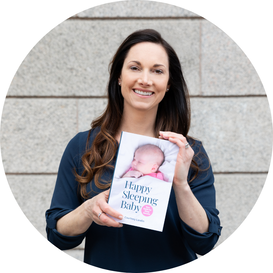 Hi, I’m Courtney Landin. I became a certified infant and child sleep specialist because I learned first-hand why sleep deprivation is used as a torture technique. I know it sounds funny, but it wasn’t at the time and if you are experiencing it, you know what I mean. Throughout my training I have learned that sleep is extremely important for our bodies, brains, and emotions. I am passionate about helping other families with their sleep issues because there is a solution! My one-on-one coaching, customized sleep plan, and continued support will help your family get the rest and happiness you deserve. I am committed to helping other people find balance in life. With my experience and education, I can assist you and your family with daily life, healthy eating, and happy sleep! I will save you time with trying to find the right method, schedule, routines, and countless hours of reading and questioning what you are trying to do. Through personal experience and numerous hours of studying, I have found a method that works wonders for babies and children to achieve happy sleep! Contact me to schedule a free 15-minute consultation to assess your child’s sleep needs! For a sleep consultation we will discuss your child’s sleep history, your main concerns, and a method on how to begin working on a solution. For a nutrition consult we will discuss your nutrition goals, areas for change, and steps on how to continue with a program. Want to learn more about how and why I became a sleep coach? Read more here! Want more information about helping your baby sleep? Use my sleep book which has everything you need to know about sleep! Learn more here. Visit the Parent Resources page for sample schedules and more tips to help your kiddo sleep! Or get in touch if you have more questions. 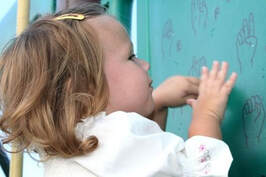 Wouldn’t it be great if you could understand your baby before they know how to speak? Babies are amazing, teachable beings who absorb more information than we give them credit for. There is a way to understand basic needs that your baby has by teaching them some baby sign language. It sounds more daunting than it is! Here are some benefits to baby sign language that will help shed some light on why this is a worthwhile task for you and your baby. Teaching baby signs:
In the book, baby sign language basics by Monta Briant, the author describes how her daughter was able to communicate her fear about a sound she was hearing. If Briant hadn’t taught her daughter signs, she would have never known that the sounds coming from the window sounded like scary elephants to her daughter! To tell you the truth, when I read about this in the book I was a little skeptical. But I had seen simple baby signs work with other kids and knew that it was possible and wanted to teach my daughter this skill. It took a few weeks but, after her first sign I was blown away! She absorbed so many aspects of the day that pass me by as common occurrences! I once thought she was randomly waving while we were talking a walk but, I soon heard that she heard a siren and she was signing ‘siren!’ Silly me! There’s never a ‘right time’ or a ‘teaching’ time with signing. Start with common words and it will become easy and effortless for you. Your baby is in a constant state of learning therefore, adding signs won’t be any added stress for them! It does take time so, keep with it! Don’t get discouraged if after a couple of weeks your baby isn’t signing yet. Start with a few simple signs, take for example dog, drink, food, and ‘more’ to begin. You don’t need to sign every word in your sentences but, pick a few key words to help communicate. It will be a huge pay off when you see your child make their first sign! I can guarantee that you will want to learn and teach them more! The long-term benefits for your child are encouraging but if anything, it will amaze you on a daily basis as to how much your baby can tell you with a few simple signs! Happy signing! Enjoy the links below and start signing with your baby today! Click here for 30 sign videos (5 signs per video) to get you started! Want more information about helping your baby sleep? Use my sleep book which has everything you need to know about sleep! Learn more here. Visit the Parent Resources page for sample schedules and more tips to help your kiddo sleep! Or get in touch if you have more questions.  I’ve been in a tired mom’s slippers. I understand the frustration about conflicting advice in baby books, especially about sleep. Before I had my daughter, I thought babies slept when they were tired. I heard from several friends about how much their baby slept in the newborn stage; going off of these comments I planned to continue MBA classes two months after her birth figuring that I had plenty of time to read while she slept! Oh boy was I wrong! My baby RARELY slept. And never wanted to be put down. Gone were the days of my envisioned pleasant time with my newborn. Instead it was filled with walking, rocking, more walking, and more rocking, and lots of crying. At about two months old I started asking friends for advice and what books to read. It seemed simple enough. Create a schedule and stick to it. But that didn’t work at all. Nothing worked that I was trying and that’s why only reading books isn’t enough sometimes. It turned out that part of the problem was a milk protein allergy and once that was settled things started to get much better. Except that she didn’t know what a bed was or how to go to sleep without rocking, nursing, or walking. It would take up to an hour for her to fall asleep and she slept for less than the time it took to get her to sleep. I realized I needed help beyond what I was reading. That’s when I found a daytime and night time routine that fit us and then things changed. I knew this was a solution for many other parents as well and decided to get certified as a sleep consultant. I’ve read countless books, numerous articles on line, and case studies about sleep for my sleep training certification. Many have different takes on how to help babies sleep. But the main point of the different approaches is that they are different for a reason. Not all babies are the same and the same approach won’t work for all babies or parenting styles. It can be extremely frustrating when a mom is sleep deprived and needs help but doesn’t know what advice to follow. That’s when many seek the help of someone to tell them what needs to be done. That’s why there are sleep consultants. We teach the parents the correct methods that will work for their child and their parenting style. For some babies and parents it only requires pinpointing small parts of the routine that needs to change. For others it is a longer process. As a sleep consultant, I know that The Happy Sleep Plan, along with my personalized coaching works. I also know how to ask the right questions to tailor a Happy Sleep Plan to the child’s temperament and parent’s frayed nerves. After working with so many parents, I decided to write 'Happy Sleeping Baby ~ Your guide for sleep success' because there isn't a one-size-fits-all solution. BUT there are general tips that all parents need to have in place for their baby to sleep well. I help step you through setting up for sleep, and offer you three different sleep solutions for you to find what's right for your family. You'll also find out what you can and can't affect when it comes to sleep! You can find more info or order my book here. There are also other free resources you can use on the Parent Resources page, such as sample schedules and more tips to help your baby sleep! Read the article that I based this post off of here: Exhausted New Mom’s Hilarious Take on ‘Expert’ Sleep Advice  I know how hard it can be to not get a full night of rest for months on end. You prepare for sleepless nights for the first few weeks after bringing baby home, but if you are still waking up every two hours or less after eight months you are probably at the end of your rope, right? I know, I’ve been there. Luckily, babies can learn to sleep through the night with the help of their parents. Every baby is different and it’s important for parents to know their baby’s temperament to determine when their child is capable of sleeping through the night. Parents do their best to care for their baby, but unknowingly we create sleep associations that our babies rely on to fall asleep. Sleep associations, or sleep props, can be feeding to sleep, rocking, singing, carrying, or taking a stroller ride to fall to sleep. At no fault to the baby or the parent, they begin to associate falling asleep with these actions. Once these actions stop, the baby wakes up and needs the same action to fall asleep again. Sound familiar? The solution can be simple by adjusting the baby’s schedule and sleep associations and they will eventually sleep soundly for naps and through the night. But sometimes the tricky part is knowing exactly what to do because it sounds so simple! After working with so many parents, I decided to write 'Happy Sleeping Baby ~ Your guide for sleep success' because there isn't a one-size-fits-all solution. BUT there are general tips that all parents need to have in place for their baby to sleep well. I help step you through setting up for sleep, and offer you three different sleep solutions for you to find what's right for your family. You'll also find out what you can and can't affect when it comes to sleep! You can find more info or order my book here. There are also other free resources you can use on the Parent Resources page, such as sample schedules and more tips to help your baby sleep! If you need more personalized support, don't hesitate to contact me here. I totally understand how tricky it can be to figure out a child's sleep when all you need is a good night of sleep yourself. |
- ABOUT
- Books
- Sleep Services
-
Parent resources
- Awake WIndows and Naps
- Newborn Awake WIndow
- Milestones and regressions
- Understanding Baby Sounds
- Baby Sign Language
- Example Schedule - Newborn
- Example Schedule - 3 to 6 months old
- Example Schedule - 6 to 8 months old
- Example Schedule - 9 to 12 months old
- Example Schedule - 13 months+
- Example Schedule - Toddler
- Blog
- Contact

